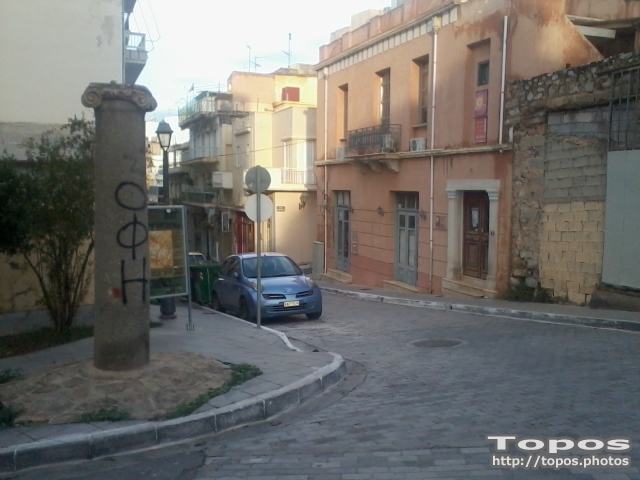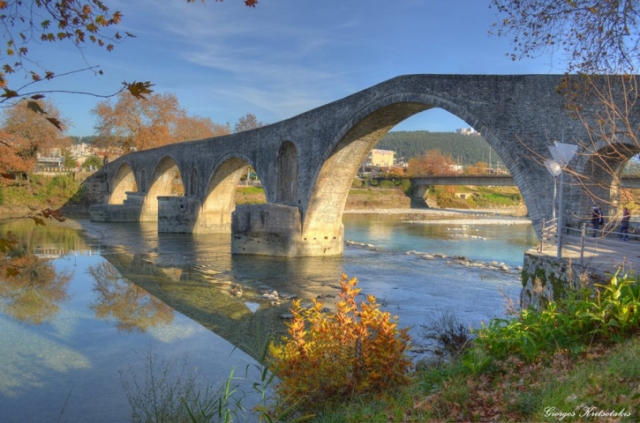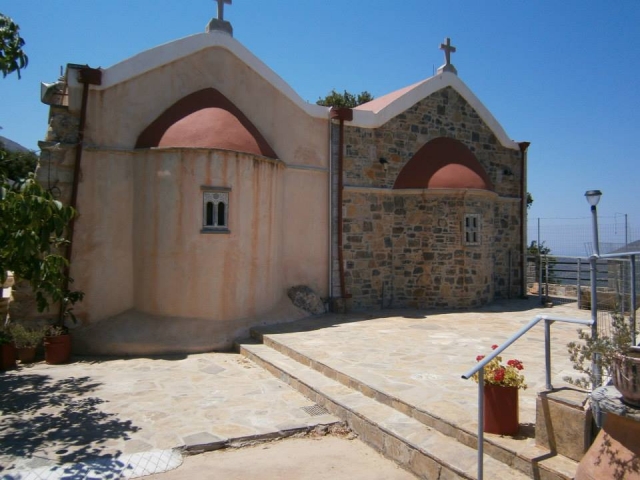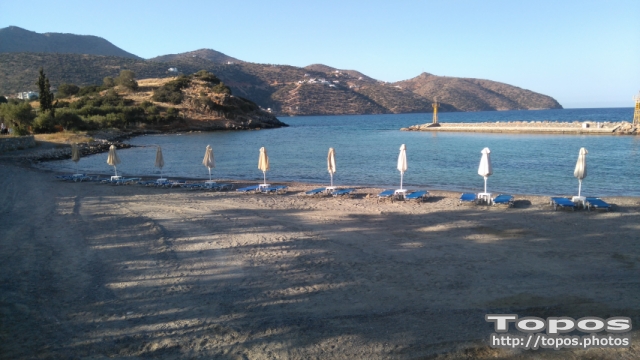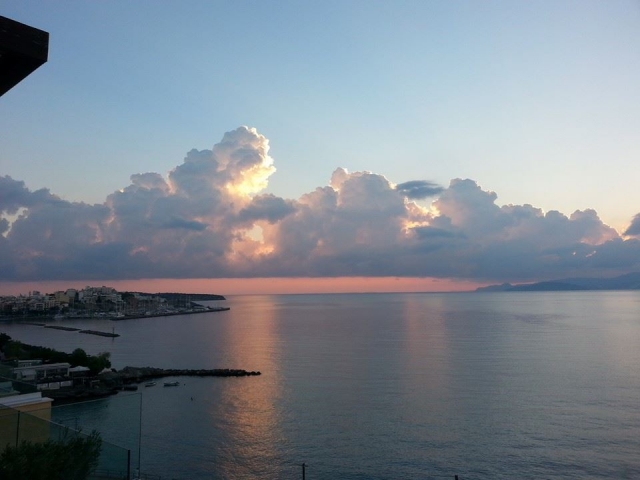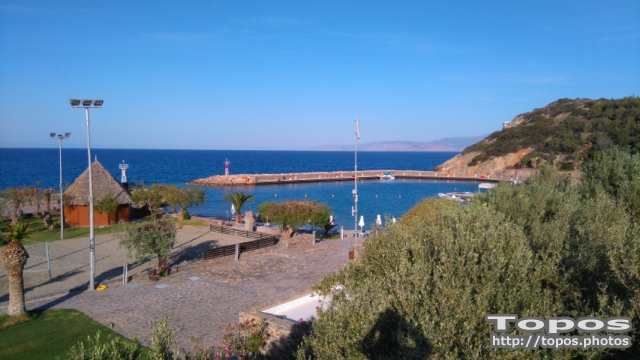Athens
Website: www.cityofathens.gr
Athens is the capital and largest city of Greece. It is also known as the birthplace of democracy. Named after the goddess Athena, Athens is one of the oldest cities in the world with a recorded history of at least 3,000 years. Today, the Greek capital is a bustling and cosmopolitan metropolis with an urban population of 3.1 million people and a metro population of 3.7 million people. The Athens metropolitan area is the centre of economic, financial, industrial, cultural and political life in Greece. The city is also rapidly becoming a leading business centre in the European Union. The city proper has a land area of 39 km² while the urban agglomeration of Athens spans 412 km².
Ancient Athens was a powerful city-state center of learning, home of Plato's Academy and Aristotle's Lyceum. It is widely referred to as the cradle of Western civilization, largely due to the impact of its cultural and political achievements during the 5th and 4th centuries BC on the rest of the then known European Continent.[8] The classical era heritage is still evident in the city, portrayed through a number of ancient monuments and artworks, the most famous of all being the Parthenon on the Acropolis, standing as an epic landmark of western civilization. Athens is also home to some World Heritage Sites. Athens was the host city of the first modern-day Olympic Games in 1896 and in 2004 it welcomed the Summer Olympics back home with great success.
Geography
Athens sprawls across the central plain of Attica, often referred to as the Attica Basin, which is bound by Mount Aegaleo in the west, Mount Parnitha in the north, Mount Penteli in the northeast, Mount Hymettus in the east, and the Saronic Gulf in the southwest. Athens has expanded to cover the entire plain making future growth difficult. The geomorphology of Athens causes the so-called temperature inversion phenomenon, partly responsible for the air pollution problems the city has recently faced.[9] (Los Angeles, with similar geomorphology, has similar problems).
Climate
Athens is located at a transition point between the Mediterranean and the Alpine climatic zones. The city enjoys a typical Mediterranean climate, with the greatest amounts of precipitation mainly occurring from mid-October to mid-April; any precipitation is sparse during summer and falls generally in the form of showers and/or thunderstorms. Because it is located in a strong rain shadow, however, Athens is very dry compared with most of Mediterranean Europe. The mountainous northern suburbs, however, experience a somewhat differentiated climate with generally lower temperatures and more considerable snowfalls in winter. Fog is highly unusual at the city center but is more frequent to the east, behind the Hymettus mountain range.
Snowfalls occur in an almost yearly basis, though these do not normally lead to significant if any disruptions at all. Nevertheless, the city has experienced its share of blizzard-like conditions, demonstrated in severe episodes that, in fact, tend to become more and more often in this current decade. The most recent examples include the blizzard of March 1987, February 1992, January 2002, February 2004 and January 2006 all dumping heavy amounts of snow that literally blanketed the entire metropolitan area for days.
Spring and autumn are considered ideal seasons for sightseeing and indeed for all kinds of outdoor activities.
Summers can be particularly hot and at times prone to smog and pollution related conditions (admittedly, however, much less so compared to the past). The average summer daytime maximum temperature is 32°C. Heat waves are not too common and mostly happen during the months of July and/or August, when hot air masses come to Greece from the south or the southwest. It is only on such days that temperature maxima shoot over 38°C.
The all time high temperature for the metropolitan area of Athens is +45.0°C and was measured at the Nea Filadelfia suburb (July 2000, HNMS station), while the respective low temperature record is -10.4°C and was measured at the Votanikos area, close to the city center.
Population
Athens has an official population of 745,514 with a metro population of 3.7 million. The actual population, however, is believed to be higher, because during census (taking place once every 10 years) some Athenian residents travel back to their birthplaces and register as local citizens there [10]. Also unaccounted for is an undefined number of unregistered immigrants originating mainly from Albania and other Eastern European countries.
The ancient site of the city is centered on the rocky hill of the acropolis. In ancient times the port of Piraeus was a separate city, but it has now been absorbed into greater Athens. The rapid expansion of the city initiated in the 50's and 60's continues today because of its transition from an agricultural to an industrial nation.[13] The expansion is now especially towards the East and North East (a tendency that is greatly related to the new Eleftherios Venizelos International Airport and Attiki Odos, the freeway that cuts across Attica). By this process, Athens has engulfed many former suburbs and villages in Attica and continues to do so.
Attica Periphery
Athens is located within the Attica Periphery which encompasses the most populated region of Greece. The Attica Periphery itself is split into four prefectures; they include the Athens Prefecture, Piraeus Prefecture, West Attica Prefecture, and the East Attica Prefecture.
Athens Prefecture
The next largest municipalities are the Municipality of Piraeus, the Municipality of Peristeri and the Municipality of Kallithea. Athens can therefore refer either to the entire metropolitan area or to the Municipality of Athens. Each of these municipalities has an elected district council and a directly elected mayor. Mrs. Dora Bakoyanni of the conservative New Democracy party was the Mayor of Athens from 1 January 2003 until 15 February 2006, when she joined the Greek Cabinet as the Minister of Foreign affairs. She was the 76th Mayor of Athens and the first female ever to hold the post in the history of the city. She was replaced by Theodoros Behrakis. The next municipal elections occurred in October 2006, and as of those results, Nikitas Kaklamanis is the new mayor of Athens.
Municipality of Athens
The modern city of Athens consists of what was once a conglomeration of distinct towns and villages that gradually expanded and merged into a single large metropolis; most of this expansion occurred during the second half of the 20th century. The Greater Athens area is now divided into 55 municipalities, the largest of which being the Municipality of Athens or Dimos Athinaion, with a population of 745,514 people.
The Municipality of Athens is divided into seven municipal districts or demotika diamerismata. The 7-district division, however, is mainly used for administrative purposes. For Athenians the most popular way of dividing the city proper is through its neighbourhoods (usually referred to as areas in English), each with its own distinct history and characteristics. Those include Pangrati, Ambelokipi, Exarhia, Ano and Kato (Upper and Lower) Patissia, Ilissia, Ano and Kato Petralona, Mets, Koukaki as well as Kypseli, world's second most densely populated urban area. For someone unfamiliar with Athens, getting to know these neighbourhoods can often come particularly handy in both exploring and understanding the city.
Athenian life
Central Athens
Athens is home to 148 theatrical stages, more than any other European city (including the famous ancient Herodes Atticus Theatre, home to the Athens Festival, which takes place from May to October each year).[17][18] In addition to a large number of multiplexes, Athens features many romantic, open air garden cinemas. Athens also has a vast number of music venues including a state of the art music hall known as the "Megaron Moussikis" that attracts world-famous artists all year round.[19]
Psiri
The Psiri neighbourhood - aka Athens's "meat packing district" - features mainstream and trendy bars making it a hotspot for the city, and a number of live music restaurants called "rebetadika", after Rebetiko, a unique kind of music that blossomed in Syros and Athens from the 1920s till the 1960s. Rebetiko is admired by many, therefore virtually every night rebetadika get crammed by people of all ages that will sing, dance and drink wine until dawn.
Gazi
The Gazi (Greek: ÃêÜæé) area, one of the latest in full redevelopment, is located around a historic gas factory, that has been converted into the Technopolis cultural multiplex and has a number of small clubs, bars and restaurants, as well as Athens's nascent "gay village". The relatively recent and rapid redevelopment of these areas has brought the - recently relatively forgotten - city centre back into the limelight.
Plaka
Plaka, lying just beneath the Acropolis, is famous for its numerous neoclassic buildings, making it one of the most scenic districts of Athens. It remains the traditional top tourist destination, with many tavernas featuring traditional music.
Monastiraki & Thission
Nearby Monastiraki, on the other hand, is famous for its string of small tourist shops as well as its crowded flea market and the tavernas that specialize in souvlaki. Another district notably famous for its student-crammed, stylish cafés is Theseum or Thission (Greek: Èçóåßï), lying just west of Monastiraki. Thission is home to the remarkable ancient temple of Hephaestus, standing on top of a small hill.
Kolonaki
The Kolonaki area, near Syntagma Square, is full of boutiques catering to well-heeled customers by day and bars and luxurious restaurants by night. Ermou Street, an approximately 1 km pedestrian road connecting Syntagma Square to Monastiraki, has traditionally been considered a consumer paradise for both the Athenians and tourists. Full of fashion shops and shopping centres featuring most international brands, it is in the top 5 most expensive shopping streets in Europe and the tenth most expensive retail street in the world.[20] Near there, the renovated Army Fund building in Panepistimiou Street includes the "Attica" department store and several high-class designer stores. Kolonaki is often considered one of the more chic areas of Athens.
Suburbs
The Athens Metropolitan Area consists of 73 densely populated municipalities, sprawling around the city of Athens to virtually all directions. According to their geographic location in relation to the city of Athens, the suburbs are divided into four zones namely the northern suburbs (including Ekali, Nea Erythrea, Agios Stefanos, Drosia, Kryoneri, Attica, Kifissia, Maroussi, Pefki, Vrilissia, Melissia, Pendeli, Halandri and Filothei), the southern suburbs (including Palaio Faliro, Elliniko, Glyfada, Alimos, Voula and the southernmost suburb of Vouliagmeni), the eastern suburbs (including Zographou, Vyronas, Kaisariani, Cholargos, Papagou and Aghia Paraskevi) and the western suburbs (including Peristeri, Ilion, Egaleo, Petroupoli and Nikaia). The northern and most of the southern suburbs are particularly affluent districts, resided primarily by middle-to-high and high incomers. The western suburbs are primarily resided by middle incomers with certain few areas resided by middle-to-low incomers and still others resided by middle-to-high incomers. Finally the eastern suburbs are primarily resided by middle and middle-to-high incomers.
The Athens city coastline, extending from the major commercial port of Piraeus to the southernmost suburb of Varkiza for some 30 km, is also connected to the city centre with a tram (which, although modern can be slow during rush hours) and it boasts a series of high class restaurants, cafes, exciting music venues and modern sports facilities. In addition, Athens is packed with trendy and fashionable bars and nightclubs that are literally crowded by the city's youth on a daily basis. Especially during the summer time, the southern elegant suburbs of Glyfada, Voula and Vouliagmeni become home to countless such meeting points, situated all along Poseidonos and Alkyonidon Avenues. In the winter time, the focus of the nightlife moves up into the city centre, in Piraeus as well as across the northern suburbs. In addition, "Bournazi" at the western suburb of Peristeri has also become eminent for its intense nightlife, becoming a hotspot, mainly for the residents of the western Athenian suburbs. In the northern districts, the classy suburb of Kifissia hosts a vast number of expensive restaurants, bars and cafés.
The Mall Athens is a massive, American-style mall, located in the northern suburb of Maroussi, that provides a vast number of selections.
Nearby is the entirely new attraction of the massively upgraded main Olympic Complex (known by its Greek acronym OAKA). The whole area has been redeveloped under designs by the Spanish architect Santiago Calatrava with steel arches, landscaped gardens, fountains, futuristic passages and a landmark new blue glass roof which was added to the main Stadium. A second Olympic complex, next to the sea at the beach of Kallithea (Faliron), also boasts futuristic stadiums, shops and an elevated esplanade. Work is underway to transform the grounds of the old Athens Airport - named Hellinikon - in the southern suburbs into a massive landscaped park, which will be known as Metropolitan Park (considered to be the largest in Europe when ready).[21]
The major waste management efforts undertaken in the last decade (especially the plant built on the small island of Psytalia) have made pollution of the Saronic Gulf a thing of the past and now the coastal waters of Athens are a haven for swimmers. Athens has some of the cleanest and most pristine beaches in Europe. In fact many of Athens' elegant southern suburbs (such as Alimos, Palaio Faliro, Elliniko, Voula, Vouliagmeni and Vari) host a number of beautiful, sandy beaches, most of which are operated by the Greek National Tourism Organization.[22] This means that one has to pay a fee in order to get in. Nonetheless, this fee is not expensive in most cases and it includes a number of related, convenient services like parking facilities, cocktail drinks and umbrellas. These beaches are extremely popular in the summer by both Athenians and foreign tourists.
The city is surrounded by four easily accessible mountains (Parnitha and Penteli to the north, Hemmettus to the southeast, and Egaleo to the west). Mount Parnitha, in particular, is the tallest of the city (1,453 m) and it has been declared a protected National Park. It has tens of well-marked paths, gorges, springs, torrents and caves and you may even meet deers while exploring its dense forests. Hiking and mountain biking in all four mountains have been and still remain popular outdoor activities for many Athenians. Casinos operate on both Mount Parnitha, some 30km from downtown Athens (accessible by car or cable car) and the nearby town of Loutraki (accessible by car via the Athens - Corinth National Highway or the suburban railway).
The nearby islands of Salamina, Aigina, Poros, Hydra and Spetses are also sites of spectacular natural beauty and historical architecture. The Athens municipality maintains a website of tourist interest.[23]
Architecture
Athens is a melting pot of many different architectural styles, ranging from Greco-Roman, Neo-Classical, and modern styles. Many of the prominent buildings of the city are either Greco-Roman, or Neo-Classical style. Most of the Neo-Classical buildings, were built during the time of the rule of King Otto of Greece. Under the guide of Theophil Freiherr von Hansen or as he is more commonly known as Theofil Hansen, helped design and construct these buildings.
Transportation
The Athens Mass Transit System consists of a large bus fleet, a trolleybus fleet that mainly serves the downtown area, the Athens Metro, a tram line connecting the southern suburbs to the city center,[26] and the Athens Suburban Railway services. The public transportation system is occasionally disrupted by the striking of its public employees.
Attiko Metro
The Athens Metro, or as it is more commonly known as the Attiko Metro, is one of the most impressive underground Mass Transit systems in the world; while its main purpose is transport, it also houses Greek artifacts found during construction of the subway. It has an operating staff of 387 employees and runs two of the three metro lines. It's two operational lines of which are distinguished by the colors used in the relevant maps and signs are blue and red. The two lines (red and blue) were constructed mainly during the 1990s and the first sections opened in January 2000. They run entirely underground. Attiko Metro operates a fleet of 42 trains and 252 wagons with a daily occupancy of 550,000 passengers. The Blue Line runs from the central Monastiraki district to Doukissis Plakentias avenue, in the eastern suburb of Halandri and covers a distance of 12 km. The Blue Line then ascends on ground level and reaches Eleftherios Venizelos International Airport, using the Suburban Railway rails and extends its distance to 35 km. The Red Line runs from Aghios Antonios to Aghios Dimitrios and covers a distance of 11.6 km.[29] Extensions to both lines are under construction, most notably westwards to Egaleo, southwards to the Old Hellinikon Airport East Terminal (future Metropolitan Park) and eastwards towards the easternmost suburb of Aghia Paraskevi.
Electric Railway (ISAP)
The third line not run by the Athens Metro is the ISAP , the Electric Railway Company. This is the green line of the Athens Metro as shown in the adjacent map, and unlike the red and blue which run entirely underground, ISAP is either running above ground or below ground at different sections of its network. This operation runs the original metro line from Piraeus to Kifisia. It serves 22 stations and a network length of 25.6 km.[30] It has an operating staff of 730 employees, and a fleet of 44 trains with a total of 243 wagons. ISAP has a daily occupancy of roughly 600,000 passengers.[30] The historic Green Line, which is the oldest and for the most part runs on the ground, connects the port of Piraeus to the northern suburb of Kifissia. It will be extended the next years to Agios Stefanos, a suburb located 23 kilometers at the north from the center of the city. The line is currently 25km long and has 24 stations. After the extension to Agios Stefanos, it will be 36km long.
Suburban Rail (Proastiakos)
The Proastiakós which connects Eleftherios Venizelos International Airport to the city of Corinth, 80km west of Athens, via the central Larissa Train Station. Sometimes the Suburban Rail is considered the fourth line of the Athens Metro. The metro network, Suburban Railway not included, have a current length of 91km and it is expected to reach 124km (72 stations) by the year 2009. The Suburban Railway will be extented to Aigio (180km west of Athens) and Chalkida till the end of the year 2007.
The urban and suburban railway system is managed by three different companies, namely ISAP, Attiko Metro (lines 2 & 3) and Proastiakós (line 4).
Buses (Ethel)
Patission Avenue in central Athens.
Patission Avenue in central Athens.
The bus service operated under Ethel Thermal Bus Company is the main operator of buses in Athens. It consists of a network of 300 bus lines which span the entire Attica Basin. It has an operating staff of 5,327 employees, and runs a fleet of 1,839 buses. Of those 1,839 buses 295 of them run on natural gas. (the largest fleet of natural gas run buses in Europe).
Buses (ILPAP)
Besides being served by a fleet of natural gas and normal buses, the Athens Metropolitan Area, is also serviced by electric buses or ILPAP as it's known in Athens. The Electric Buses of the Athens and Pireaus Region (ILPAP) consist of 22 lines and an operating staff of 1,137 employees. ILPAP operates a fleet of 366 trolley buses and can run on diesel in case of a power failure.
Tram Line
The Tram operates a fleet of 42 trams which serve 47 stations.[35] It employees 345 operators and has an average daily occupancy of 80,000 people.[35] The tram runs from Syntagma Square to the southwestern suburb of Palaio Faliro, where the line splits in two branches. The first branch runs all along the Athens coastline towards the southern suburb of Glyfada while the other one heads towards the Piraeus district of Neo Faliro. Both Syntagma - Palaio Faliro - Neo Faliro and the Syntagma - Glyfada lines opened on 19 July 2004. Further extensions are planned towards the major commercial port of Piraeus and the southernmost suburb of Vouliagmeni.
Taxis
There are many taxis in Athens. They are quite cheap and during rush hours it is even considered normal to flag a taxi even when another customer is already in (although, formally, this is forbidden); in that case, if the one flagging the taxi happens to go to the approximate direction as the customer already using it and the customer does not mind (seldom if ever is this an issue), he is also allowed in, and each one gives the fare they would normally give as if they were the only customer.
Athens International Airport
Athens is served, since March 2001, by the ultra modern Eleftherios Venizelos International Airport (AIA) located near the town of Spata, in the eastern Mesoghia Plain, some 35km east of Athens.[36] It was constructed in a record 51 months, cost 2.2 billion Euros, and employees more than 14,000 people.[37] There is an Express Bus service connecting the airport to the metro system and 2 express bus services connecting the airport to Piraeus port and the city centre respectively. The airport is host to numerous awards including the "European Airport of the Year 2004" Award.[37] The airport houses a commercial area of 7,000 m² which includes cafes and duty-free shops. It can accommodate 65 landings and take-offs per hour, with its 24 passenger boarding bridges, a 150,000 m² main terminal, 144 check-in counters, and 11 baggage claim conveyor belts.[36] In 2006, Athens International Airport handled 15,079,662 passengers, an increase of 5.6% over the previous year of 2005.[38] Of those 15,079,662 passengers, 5,468,574 passengers went through the airport for domestic flights, and 9,611,088 passengers went through the airport for international flights.[38] Besides being able to handle 15,079,662 passengers, AIA handled in 2006 190,872 total flights, which is approximately 523 flights per day.
Motorways and Railways
Athens is also the hub of the Greek National Railway System. Ferries departing from the port of Piraeus connect the city to the Greek islands of the Aegean Sea, westbound to Elefsina. There are two main highways that travel both to the west, towards the city of Patra in Peloponessus (GR-8A, E94) and to the north, towards Greece's second largest city, Thessaloniki (GR-1, E75). In 2001-2004 a ring road toll-expressway (Attiki Odos) was gradually completed, extending from the western industrial city of Elefsina all the way to the Athens International Airport, after encircling the city from the north. The Ymittos Ringroad is a separate section of Attiki Odos connecting the eastern suburb of Kaisariani to the northeastern town of Glyka Nera and this is where it meets the main part of the ring-road. The total length of Attiki Odos is now approximately 70km.
Tourism
Athens has been a popular destination for travellers since antiquity. Over the past decade, the infrastructure and social amenities of Athens have been radically improved, in part due to the city's successful bid to stage the 2004 Olympic Games. The Greek state, aided by the E.U., has given money into major infrastructure projects such as the new, state-of-the-art "Eleftherios Venizelos" International Airport, the massive expansion of the Metro system, and the new Attiki Odos motorway. Home to a vast number of 5 and 4 star hotels, the city is currently the 6th most visited capital in Europe.
Large parts of the city centre have been redeveloped under a masterplan called "Unification of Archaeological Sites of Athens". Notably, the famous Dionysiou Aeropagitou street has been pedestrianised, forming a scenic route. The route starts from the Temple of Olympian Zeus at Vasilissis Olgas Avenue, continues under the southern slopes of the Acropolis near Plaka and finishes just outside the Temple of Hephaestus in Theseum. This route provides the visitors views of the Parthenon and the Agora (the meeting point of ancient Athenians), away from the busy city centre.
* Syntagma Square (Constitution Square) is situated in central Athens and near the site of the former Royal Palace, now the Greek Parliament and other 19th-century public buildings. The National Garden behind the Parliament and stretching to the Zappeion is a verdant oasis in the center city. Syntagma is the largest square of the city and it is also home to a number of luxurious hotels, including the historic Grande Bretagne, Athens' first hotel. Syntagma is essentially the tourist core of the city, being in the centre of an area where most of the famous ancient monuments are located, all within a radius of 2km.
* Southeast of Syntagma Square stands the Kallimarmaro Stadium, the place where the first modern Olympic Games took place in 1896. It is a replica of the ancient Athens Stadium. It is the only major stadium (60,000 spectators) made entirely of white marble from Mount Penteli, the same as that used for the construction of the Parthenon.
* Athens features a number of hills. Lykavittos is one of the tallest hills of the city proper that, according to an ancient legend, was actually a boulder thrown down from the sky by the Goddess Athena. Located in the city centre, near Alexandras Avenue and Vassilissis Sofias Avenue, it offers views of sprawling Athens below. On top of it, stands St. George's church. Philopappos Hill is yet another famous hill, located just to the southwest of Acropolis.
* The city's classical museums include the National Archaeological Museum of Athens at Patission Street (which holds the world's greatest collection of Greek art), the Benaki Museum in Pireos Street (including its new Islamic Art branch),[41] the Byzantine Museum and the Museum of Cycladic Art (the Stathatos Mansion) in the central Kolonaki district (recommended for its collection of elegant white metamodern figures, more than 3,000 years old).[42] Most museums were renovated ahead of the 2004 Olympics. A new Acropolis Museum, scheduled to open in late 2006[43] in the Makriyanni district was designed by Swiss-French architect Bernard Tschumi. The Athens Planetarium,[44] located in Andrea Syngrou Avenue, is considered to be among the world's best.
* The old campus of the University of Athens, located in the middle section of Panepistimiou Street, is one of the finest buildings in the city. This combined with the adjacent National Library and the Athens Academy form the imposing "Athens Trilogy", built in the mid-19th century. However, most of the university's functions have been moved to a much larger, modern campus located in the eastern suburb of Zográfou. The second most significant academic institution of the city is the Athens Polytechnic School (Ethniko Metsovio Politechnio), located in Patission Street. More than 20 students were killed inside the university in November 17, 1973 during the Athens Polytechnic Uprising against the military junta that ruled the nation from April 21, 1967 until July 23, 1974.
Sister cities
Athens has the following sister cities:
* Washington, DC, USA
* Los Angeles, California, USA (1984) [45]
* Chicago, Illinois, USA (1997) [46]
* Philadelphia, Pennsylvania, USA
* Boston, USA
* Athens, Georgia USA
* Montreal, Canada
* Paris, France
* Rome, Italy
* Genova, Italy
* Madrid, Spain
* Barcelona, Spain
* Prague, Czech Republic
* Moscow, Russia
* Beijing, China (2005)[47]
* Xi'an, People's Republic of China
* Istanbul, Turkey
* Belgrade, Serbia
* Nicosia, Cyprus
* Beirut, Lebanon
* Santiago, Chile
* Rabat, Morocco
* Cusco, Peru
* Yerevan, Armenia
* Sofia, Bulgaria
* Bucharest, Romania
* Warsaw, Poland
* Kiev, Ukraine
* Tirana, Albania
* Tbilisi, Georgia
* Ljubljana, Slovenia
* Havana, Cuba
* Bethlehem, Palestinian Territories
* Cluj-Napoca, Romania
Professional sports
Club Sport Founded League Venue
AEK Athens Football 1924 Super League Greece Athens Olympic Stadium
Olympiacos Football 1925 Super League Greece Karaiskaki Stadium
Panathinaikos Football 1908 Super League Greece Athens Olympic Stadium
Panionios Football 1890 Super League Greece Nea Smyrni Stadium
Ionikos Football 1910 Super League Greece Nikaia Stadium
Atromitos Football 1950 Super League Greece Peristeri Stadium
Egaleo FC Football 1930 Super League Greece Egaleo Stadium
Panathinaikos BC Basketball 1908 A1 Ethniki Athens Olympic Stadium
Olympiacos Basketball 1925 A1 Ethniki Peace and Friendship Stadium
AEK Athens Basketball 1924 A1 Ethniki Galatsi Center
Panionios Basketball 1890 A1 Ethniki Helliniko Arena
Maroussi BCE Basketball 1970 A1 Ethniki Maroussi Arena
Spartakos Glyfadas Baseball 1990 National Baseball League Helliniko Baseball Center
Maroussi 2004 Baseball 1990 National Baseball League Helliniko Baseball Center
Athinaikos Handball 1927 National Handball League Helliniko Arena
Athens Rugby Rugby 1990 National Rugby League Athens Olympic Stadium
Starbucks Rugby Rugby 1983 National Rugby League Athens Olympic Stadium
Athens is home to some of the most prestigious clubs in Europe. Panathinaikos and AEK Athens which are both multisport clubs and Olympiacos in Piraeus. It also home to innumerable other clubs some of them listed above. Beach volleyball and windsurfing are both very popular in the area. Area beaches are popular with surfers, who have created their own subculture.
Athens has twice played host to the summer Olympic Games: in 1896 and in 2004. The 2004 Summer Olympics inspired the creation of the Athens Olympic Stadium, which has been called one of the best stadiums in the world. The city has also hosted the UEFA Champions League final twice, in 1994 and in 2007.
The Athens area contains all kinds of terrain, notably the hills and mountains rising around the metropolis (it's the only major city in the Europe bisected by a mountain range); four mountain ranges extend into city boundaries. Thousands of miles of trails crisscross the city and neighboring areas, providing exercise and wilderness access on foot, bike, or horse. Across the county a great variety of outdoor activities are available, such as skiing, rock climbing, gold panning, hang gliding, and windsurfing. Numerous outdoor clubs serve these sports, including the Athens Chapter of the Sierra Club, which leads over 4,000 outings annually in the area.
Athens also boasts a number of sports venues, most noticeably Athens Olympic Stadium and Karaiskaki Stadium, a state-of-the-art sports and entertainment complex that also hosts concerts and awards shows such as the Arions.
Olympic Games
1896 Summer Olympics
1896 brought forth the revival of the modern Olympic Games, by Frenchmen Pierre de Coubertin. Thanks to him, Athens was awarded the first modern Olympic Games. In 1896 Athens had an approximate population of 123,000 people and helped boost the cities international image. Of the venues used for these Olympics, they included the Kallimarmaro Stadium, and Zappeion. It would be more than 100 years until Athens would once again be awarded the Olympics.
2004 Summer Olympics
Athens was awarded the 2004 Summer Olympics on September 5, 1997 in Lausanne, Switzerland, after having lost a previous bid to host the 1996 Summer Olympics, to Atlanta, USA. It would be the second time Athens would have the honour of hosting the Olympic Games, the first one being in 1896. After the unsuccessful bid of 1990, the 1997 bid was radically improved, and also included an appeal to Olympic history. In the last round of voting, Athens defeated Rome with 66 votes to 41. Prior to this round, the cities of Buenos Aires, Stockholm and Cape Town had already been eliminated from competition after having received fewer votes.
During the first three years of preparations, the International Olympic Committee had repeatedly expressed some concerns over the status of progress in construction work of some of the new Olympic venues. In the year 2000 the Organising Committee's president was replaced by Gianna Angelopoulos-Daskalaki, who was the president of the Bidding Committee back in 1997. From that point on, preparations continued at a highly accelerated, almost frenzied pace. Although the heavy cost was criticized, as is usually the case with most Olympic cities, Athens was literally transformed into a more functional city that enjoys state-of-the-art technology both in transportation and in modern urban development. Some of the finest sporting venues in the world were created in the city, almost all of which were fully ready on schedule. The 2004 Games were adjudged a huge success, as both security and organization were exceptionally good and only a few visitors reported minor problems, mainly concerning transportation or accommodation issues. Essentially, the only notable problem was a somewhat sparse attendance of some preliminary events. Eventually, however, a total of more than 3.2 million tickets were sold, which was higher than any other Olympics with the exception of Sydney (more than 5 million tickets were sold there in 2000).
Cities nicknamed "Athens"
* Athens of the East - Madurai, India
* Athens of the West - Berkeley, California
* Athens of the South - Nashville, Tennessee
* Athens of the North - Edinburgh, Scotland
* Athens of America - Boston, Massachusetts
* Spree Athens - Berlin, Germany
* Athens on the Isar - Munich, Germany
* Athens of Cuba - Matanzas, Cuba
* Athens of Latin America - Bogotá, Colombia
* Athens of Finland - Jyväskylä, Finland
* Serbian Athens - Novi Sad, Serbia
* Athens of the Bodrog – Sárospatak, Hungary
* Lusa Athens - Coimbra, Portugal
* Brazilian Athens - São Luís, Brazil
* Athens of Minas Gerais - Juiz de Fora, Brazil
* Sardinian Athens - Nuoro, Sardinia, Italy
* Athens of Florida - DeLand, Florida

